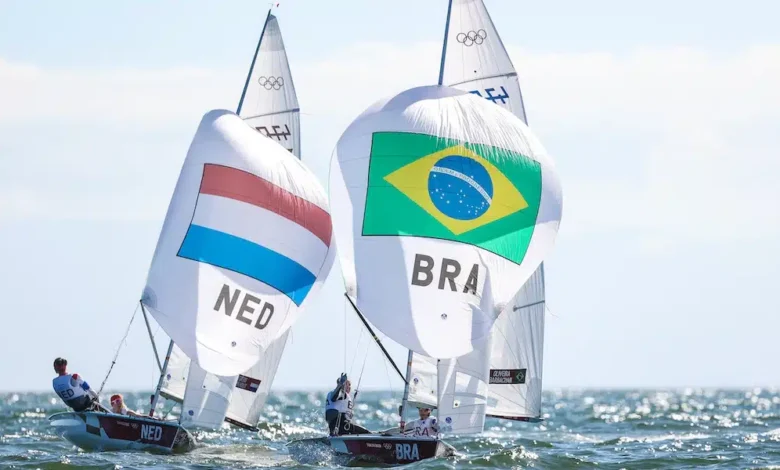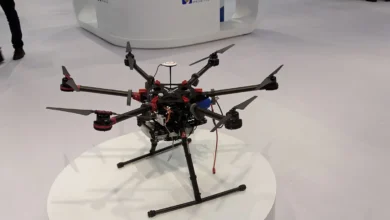Vela Olimpiadas: The Complete Guide to Olympic Sailing

What Is Vela Olimpiadas?
The term “Vela Olimpiadas” translates to “Olympic Sailing”, one of the most fascinating and technical sports in the Olympic Games. It combines skill, strategy, and deep knowledge of the wind and sea. Unlike many sports that depend on strength or speed alone, sailing requires sailors—known as regatistas—to make instant decisions based on weather conditions, currents, and competitor positioning.
In the Olympics, sailors compete in various boat classes, each with unique designs and challenges. From solo dinghies like the ILCA (formerly Laser) to high-speed double-handed boats like the 49er and Nacra 17, Olympic sailing tests both mental precision and physical endurance.
What makes vela olímpica so captivating is that no two races are the same. Every regatta offers a new puzzle, shaped by unpredictable wind patterns, changing waves, and shifting tides. To win gold, athletes must not only be skilled sailors but also masters of nature.
History and Evolution of Olympic Sailing
The history of vela olímpica dates back to the early 20th century, making it one of the oldest Olympic sports. Sailing first appeared in the 1900 Paris Olympic Games, although bad weather prevented races in 1896.
Over the decades, the sport evolved dramatically. Initially, it featured large boats crewed by wealthy sailors, but it gradually shifted toward smaller, more accessible classes, allowing athletes from diverse backgrounds to compete.
By the mid-20th century, Olympic sailing had expanded to include both men’s and women’s events. The introduction of mixed-gender classes like the Nacra 17 catamaran in recent years symbolizes the sport’s commitment to equality and innovation.
Technological advancements also transformed sailing. Modern boats now use carbon fiber, aerodynamic sails, and foiling technology, allowing vessels to “fly” above the water at incredible speeds. These innovations have made vela olímpica faster, more exciting, and more competitive than ever before.
Classes and Categories in Olympic Sailing
The Olympic sailing program includes multiple classes, each defined by boat type, crew size, and gender. Below are the main categories featured in recent Olympic Games:
| Class | Type | Crew | Description |
|---|---|---|---|
| ILCA 6 (Laser Radial) | Dinghy | 1 (Women) | Compact single-person boat known for agility and precision. |
| ILCA 7 (Laser Standard) | Dinghy | 1 (Men) | Simple but demanding single-sail boat requiring strength and strategy. |
| 49er | Skiff | 2 (Men) | High-speed boat emphasizing teamwork and balance. |
| 49er FX | Skiff | 2 (Women) | Similar to 49er but with a smaller rig, designed for female sailors. |
| Nacra 17 | Catamaran | 2 (Mixed) | A foiling boat capable of “flying” above the waves. |
| iQFoil | Windsurfing | 1 | New windsurfing class featuring hydrofoil boards for high-speed action. |
| Formula Kite | Kiteboard | 1 | Fast, dynamic class using kites for propulsion—set to dominate future Olympics. |
Each race, or regatta, includes several heats where sailors accumulate points based on finishing positions. The final race, known as the Medal Race, carries double points and determines the medalists. The sailor or team with the lowest total points wins gold.
Top Nations and Legendary Sailors
When it comes to vela olimpiadas, a few nations have built lasting legacies. Great Britain, Australia, Spain, and Brazil are among the powerhouses of Olympic sailing.
-
Spain has enjoyed consistent success, with sailing being one of its top medal-producing sports. Spanish sailors like Diego Botín and Florian Trittel made history by winning gold in the 49er class at the Paris 2024 Olympics.
-
Brazil is another strong contender, thanks to icons like Robert Scheidt, a multiple Olympic medalist whose precision and endurance made him a global legend.
-
Great Britain leads the all-time medal count, with sailors like Ben Ainslie, the most successful Olympic sailor in history, winning five Olympic medals, including four golds.
In recent years, emerging nations from Latin America and Asia have started gaining attention, showcasing how vela olímpica continues to grow beyond traditional European waters. For example, Peru’s Stefano Peschiera won a historic bronze medal in 2024, breaking a 32-year Olympic medal drought for his country.
Challenges in Olympic Sailing
Unlike many indoor or stadium-based sports, vela olímpica faces unique and unpredictable challenges:
-
Weather and Wind Conditions:
Every race depends heavily on wind strength and direction. Too little wind can delay or cancel races, while too much can cause capsizes or equipment damage. -
Technical and Financial Barriers:
Competing at the Olympic level requires expensive boats, travel logistics, and maintenance. Wealthier nations often have an advantage due to access to cutting-edge equipment and training facilities. -
Environmental Impact:
With sailing taking place in open waters, preserving marine ecosystems is crucial. Recent initiatives emphasize eco-friendly materials, sustainable boat design, and clean regatta policies to reduce pollution. -
Mental and Physical Demands:
Sailors must be in peak physical condition and possess exceptional mental clarity. Every decision—from when to tack to how to adjust the sails—can determine the outcome of a race.
Despite these hurdles, the sport continues to thrive thanks to innovations in technology, better training programs, and global efforts to make sailing more inclusive.
The Future of Vela Olimpiadas
The future of vela olímpica looks bright and dynamic. The Los Angeles 2028 Olympics are expected to feature even more advanced technologies, new classes, and enhanced sustainability standards.
The rise of foiling boats, which lift above water to minimize drag, is transforming how fans perceive sailing. These boats reach speeds once thought impossible in traditional classes, making sailing more thrilling and spectator-friendly.
Moreover, the International Sailing Federation (World Sailing) is pushing for greater gender balance and global participation. With more youth programs and investment in developing countries, the sport is becoming more accessible.
Digital innovations are also helping fans connect with vela olimpiadas. Real-time GPS tracking, 3D race simulations, and drone footage now allow viewers to experience the thrill of racing from anywhere in the world.
As sustainability becomes central to global sports, sailing stands out as one of the most eco-conscious Olympic disciplines, showcasing harmony between human skill and natural power.
Conclusion
The vela olimpiadas represents more than just a sport—it’s a perfect blend of nature, innovation, and human endurance. From its historical roots to the modern foiling era, Olympic sailing continues to inspire athletes and fans alike.
With exciting new technologies, diverse participants, and a growing commitment to sustainability, Olympic sailing is set to capture even more hearts in the years ahead. Whether you’re a lifelong sailor or just discovering the sport, the next Olympic regatta will undoubtedly deliver unforgettable moments of courage, precision, and wind-powered glory.




